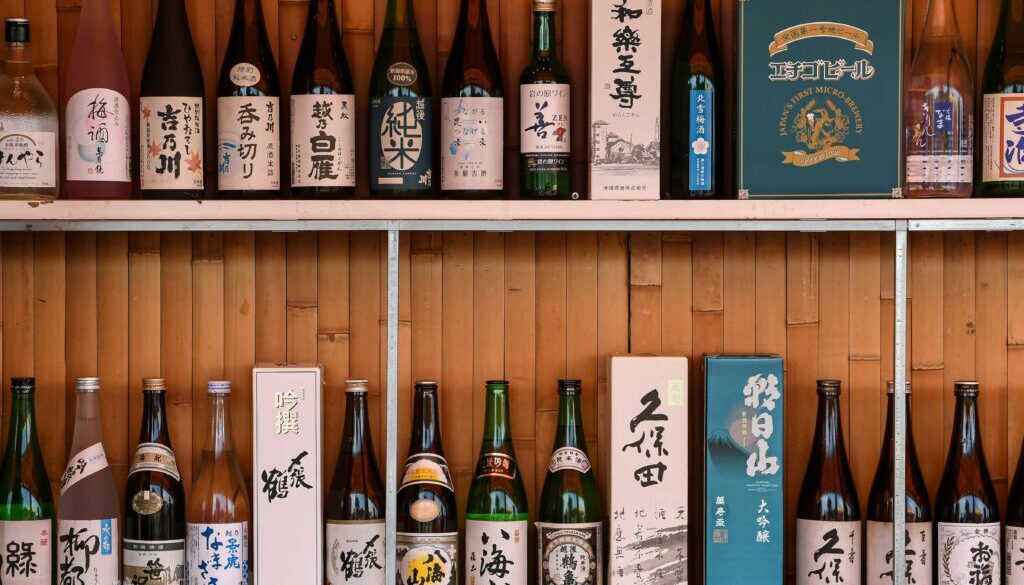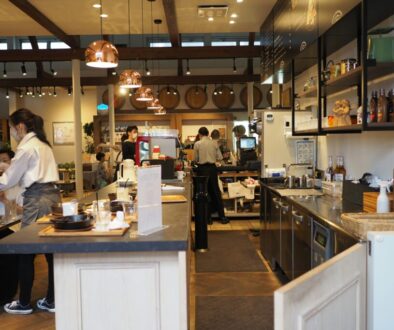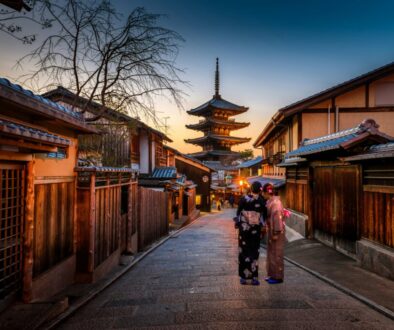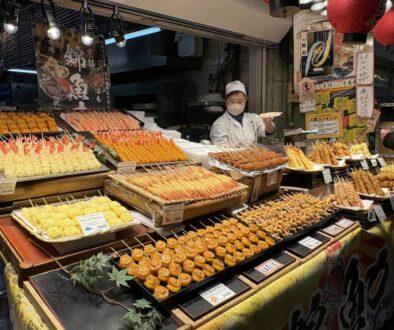Kyoto: The Heart of Japan’s Sake Culture
By day, Kyoto hums with quiet grace. Temple bells echo through bamboo groves, monks stride through moss gardens, and the scent of incense drifts in the air. But when night falls, the city’s calm spirit transforms. Lanterns flicker to life in narrow alleys, laughter spills from cozy izakayas, and the aroma of freshly cooked dinner signals one thing: sake time.
Few places in Japan capture the soul of sake quite like Kyoto. The city’s Fushimi ward, blessed with exceptionally pure spring water, has been a brewing center for more than four centuries. Generations of toji (brewmasters) have refined the craft here, creating the delicate, smooth style known as Fushimi sake, a hallmark of Kyoto’s taste and tradition.
In this Kyoto sake guide, you’ll discover the city’s best sake bars, from historic tasting houses to hidden neighborhood gems. You’ll also learn about famous Kyoto sake brands, the basics to sake etiquette, and how to choose the right flavor profile for your palate.
Whether you’re a curious first-timer or a seasoned sake lover, this guide will help you sip, learn, and savor the best of Kyoto, one cup at a time.
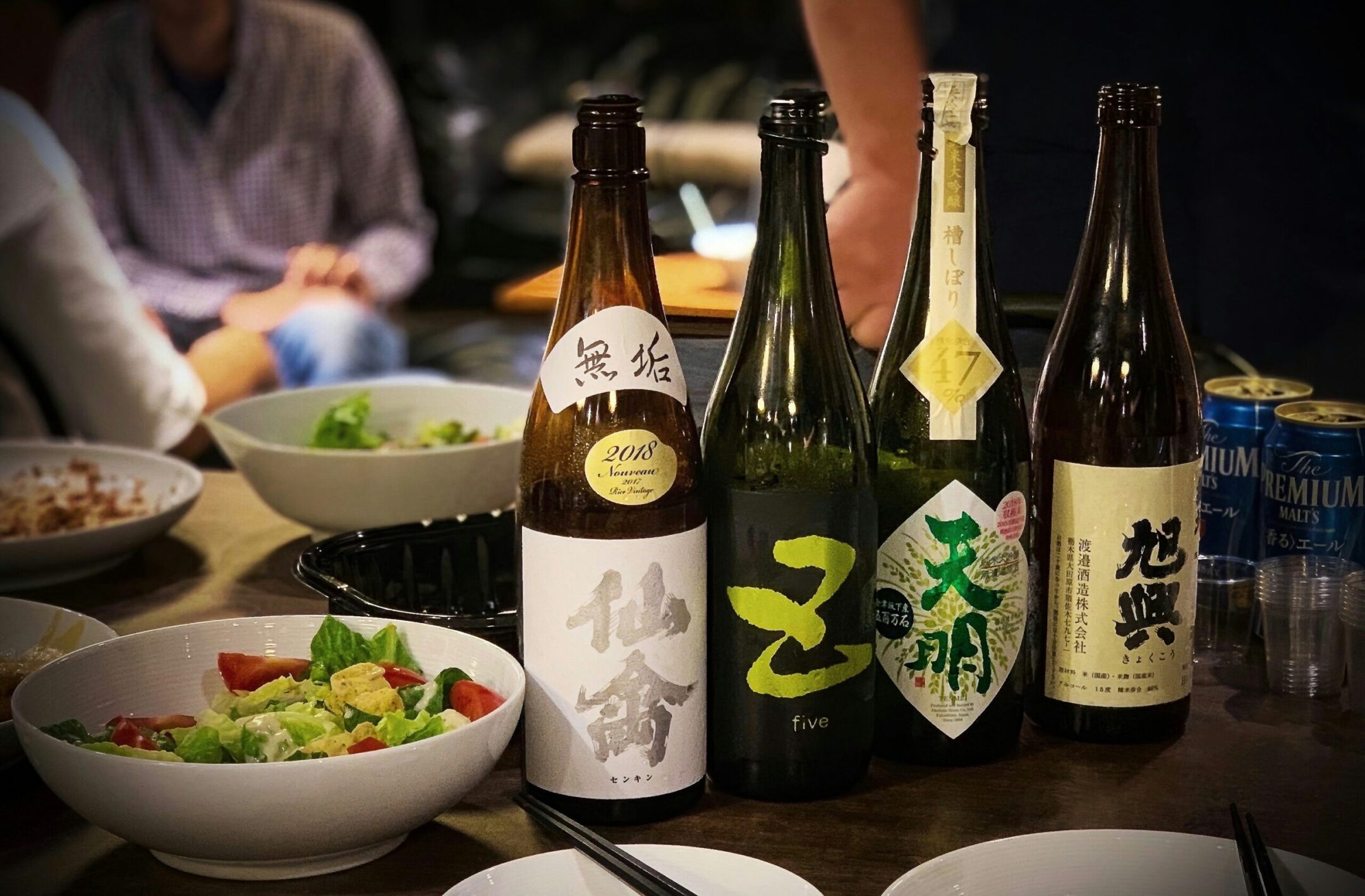
What Makes Kyoto’s Sake Scene Special
Kyoto’s sake tradition runs deep, centered around the Fushimi district, where clear spring water flows from underground aquifers fed by the surrounding mountains. This soft, mineral-balanced water is ideal for brewing and gives Fushimi sake its signature smoothness and gentle sweetness. Many of Kyoto’s breweries have operated here for centuries, blending time-honored methods with quiet innovation.
Compared to other sake regions such as Niigata or Hiroshima, Kyoto’s sake is known for being softer and more refined. Kyoto’s style offers balance, depth, and approachability.
Visitors will find a variety of sake styles across the city, including junmai, ginjo, and daiginjo, each offering a unique expression of rice, water, and craftsmanship. Here’s a quick rundown on some must-know sake vocabulary:
Sake Style Guide: Understanding the Most Common Types
Junmai (純米)
Junmai sake is made purely from rice, water, yeast, and koji with no added alcohol or sugar. It’s known for its rich umami depth and full-bodied taste, making it a favorite among traditionalists and ideal for pairing with savory Japanese dishes.
- Rice polishing ratio: No minimum polishing requirements to 70% or less of the grain remains
- Flavor: Full-bodied, savory, rich in umami
- Best for: Traditionalists and food pairings
Ginjo (吟醸)
Ginjo sake is brewed with highly polished rice and fermented slowly at low temperatures for a smooth, refined profile. It offers delicate fruity and floral aromas with a light, elegant finish that appeals to both newcomers and seasoned sake drinkers.
- Rice polishing ratio: 60% or less of the grain remains
- Flavor: Light, aromatic, slightly fruity
- Best for: Casual drinkers and chilled tastings
Daiginjo (大吟醸)
Daiginjo sake is crafted with rice polished to at least 50%, resulting in an exceptionally pure and refined flavor. It’s known for its fragrant aroma, silky texture, and delicate balance, often enjoyed slightly chilled to highlight its elegance.
- Rice polishing ratio: 50% or less of the grain remains
- Flavor: Refined, elegant, often floral
- Best for: Special occasions or premium tastings
Nigori (濁り酒)
Nigori sake is coarsely filtered, leaving fine rice particles that give it a cloudy appearance and creamy texture. It’s slightly sweeter and fuller-bodied than clear sakes, offering notes of coconut, vanilla, or fresh rice that pair beautifully with spicy or rich dishes.
- Style: Unfiltered or lightly filtered
- Flavor: Creamy, sweet, with a cloudy appearance
- Best for: Beginners or dessert pairings
Nama (生酒)
Nama sake is unpasteurized, giving it a fresh, lively character with bright, fruity flavors. It’s best enjoyed chilled and consumed soon after bottling to preserve its vibrant aroma and crisp, refreshing taste.
Note: If sake is unpasteurized, it is not possible to take it on the plane back home with you due to it needing to be refrigerated.
- Style: Unpasteurized sake
- Flavor: Fresh, lively, and bold
- Best for: Seasonal or adventurous drinkers
Tip: The more the rice is polished, the cleaner and more delicate the sake becomes. Kyoto breweries often specialize in junmai ginjo and junmai daiginjo, which highlight the purity of Fushimi water and the quality of local rice.
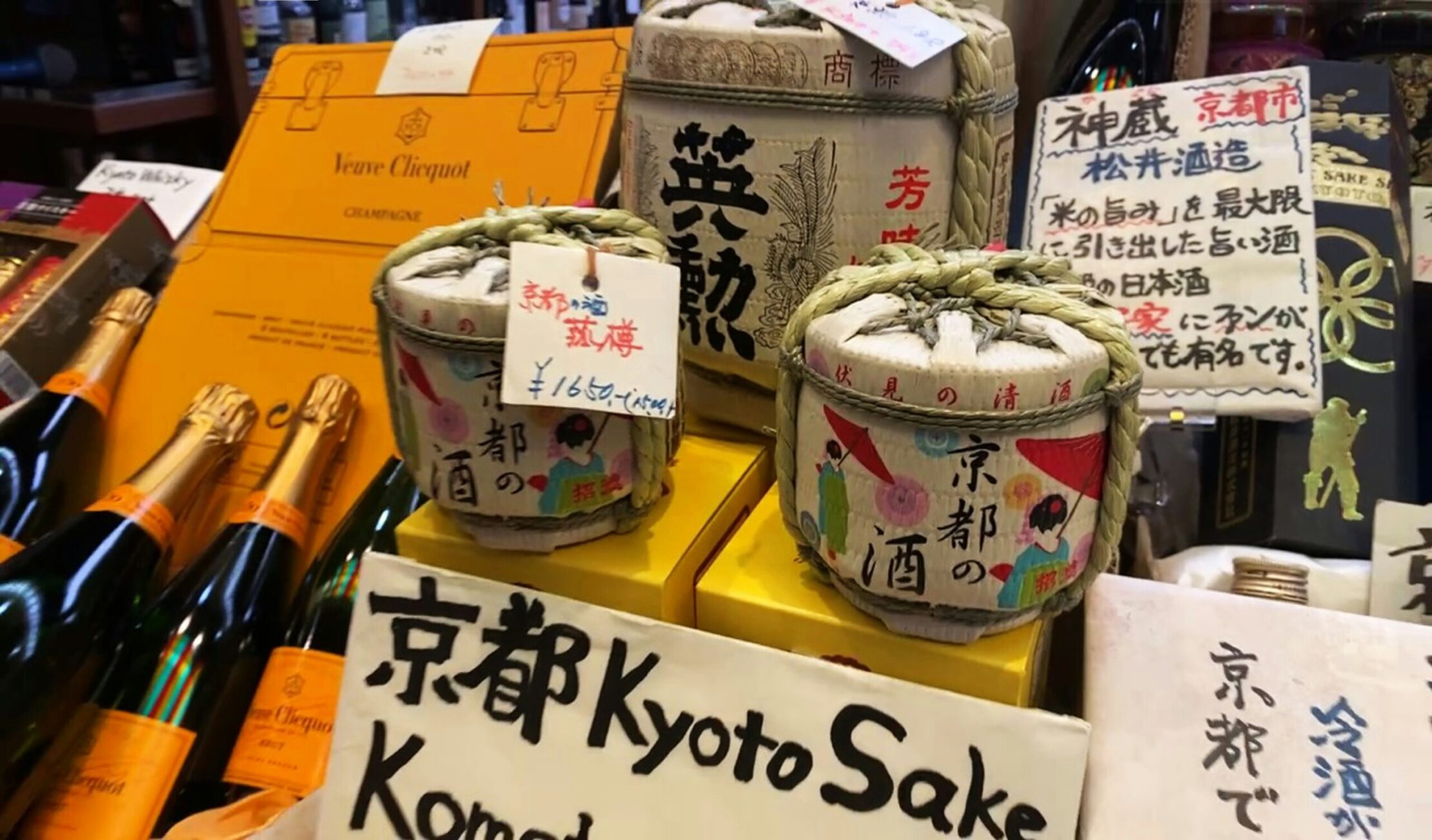
Top Kyoto Sake Brands You Must Know
Kyoto’s sake scene is built around the Fushimi district, known for its soft spring water that is perfect for brewing elegant, slightly sweet sake. Knowing these brands will help you understand the history of Kyoto’s sake and appreciate it on a deeper level.
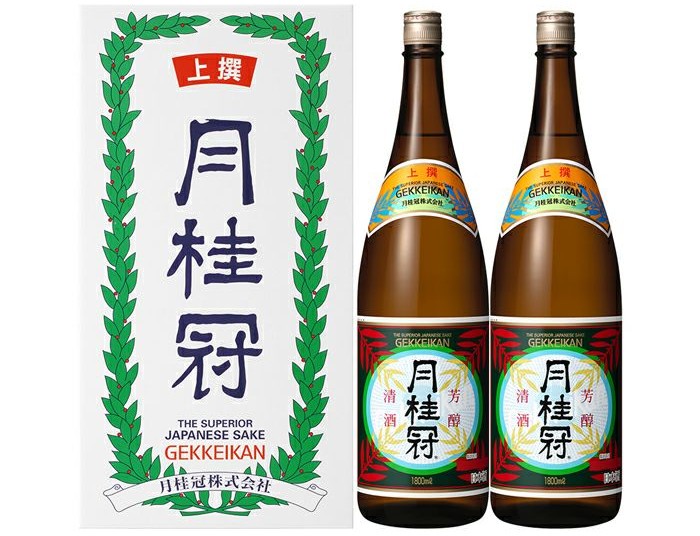
Gekkeikan (月桂冠): The Historic Giant
Founded in 1637 in Fushimi, Kyoto, Gekkeikan is one of Japan’s oldest and most renowned sake breweries, now exporting to more than 50 countries. Known for its clean, balanced flavor and approachable style, it’s an ideal choice for newcomers to sake. Visitors can explore the Okura Sake Museum for tastings and a look into centuries of Kyoto’s brewing tradition. Visit their website HERE!
Founded: 1637 | Location: Fushimi, Kyoto
- One of Japan’s oldest and most famous sake producers, now exporting to over 50 countries.
- Known for clean, balanced flavor and consistency, which is a perfect entry point for newcomers.
- Their Okura Sake Museum in Fushimi offers tastings and a behind-the-scenes look at sake history and how sake is brewed. Visit it HERE! Admission is ¥600.
- Signature sake: Gekkeikan Traditional Junmai, a smooth, light, slightly sweet sake.
Gekkeikan symbolizes Kyoto’s brewing heritage and remains the benchmark for classic Fushimi-style sake.
Want to go on a guided tour of the Okura Gekkeikan Museum and taste 7+ different sake? We recommend THIS TOUR led by sake experts!
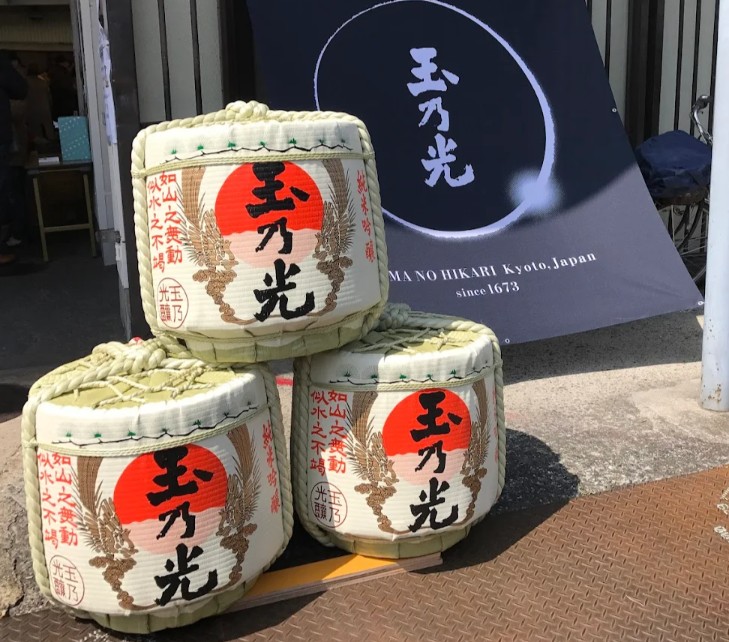
Tamanohikari (玉乃光): The Purist’s Favorite
Founded in 1673 in Fushimi, Kyoto, Tamanohikari is a pioneer of the junmai category, producing pure rice sake with no added alcohol or sugar. The brewery focuses exclusively on junmai ginjo and junmai daiginjo styles, showcasing the natural aroma and depth of premium rice. Revered by purists, Tamanohikari embodies Kyoto’s dedication to craftsmanship and traditional brewing excellence.
Founded: 1673 | Location: Fushimi, Kyoto
- A pioneer in the junmai (pure rice) category. No added alcohol or sugar!
- Known for focusing solely on junmai ginjo and junmai daiginjo sake, highlighting rice flavor and aroma.
- Appeals to sake enthusiasts who value craftsmanship and purity.
- Signature sake: Tamanohikari Junmai Daiginjo Bizen Omachi, with a rich aroma and elegant finish.
Tamanohikari helped revive traditional sake brewing styles and represents Kyoto’s premium sake craftsmanship.
Kizakura (黄桜): The Local Innovator
Founded in 1925 in Fushimi, Kyoto, Kizakura is known for its friendly “Kappa” mascot and approachable sake that welcomes both locals and visitors. The brewery produces sake and craft beer, blending Kyoto tradition with modern innovation. At Kizakura Kappa Country, guests can enjoy tastings, local dishes, and a lively introduction to Kyoto’s evolving sake culture.
Founded: 1925 | Location: Fushimi, Kyoto
- Famous for its approachable sake and playful “Kappa” mascot.
- Produces both sake and craft beer, appealing to younger and international audiences.
- Offers a lively brewery experience at Kizakura Kappa Country, combining sake tastings with local food. Visit it HERE!
- Signature sake: Kizakura Yamahai Junmai, a full-bodied, earthy, and smooth sake.
Kizakura bridges Kyoto’s brewing tradition with modern creativity and accessibility.
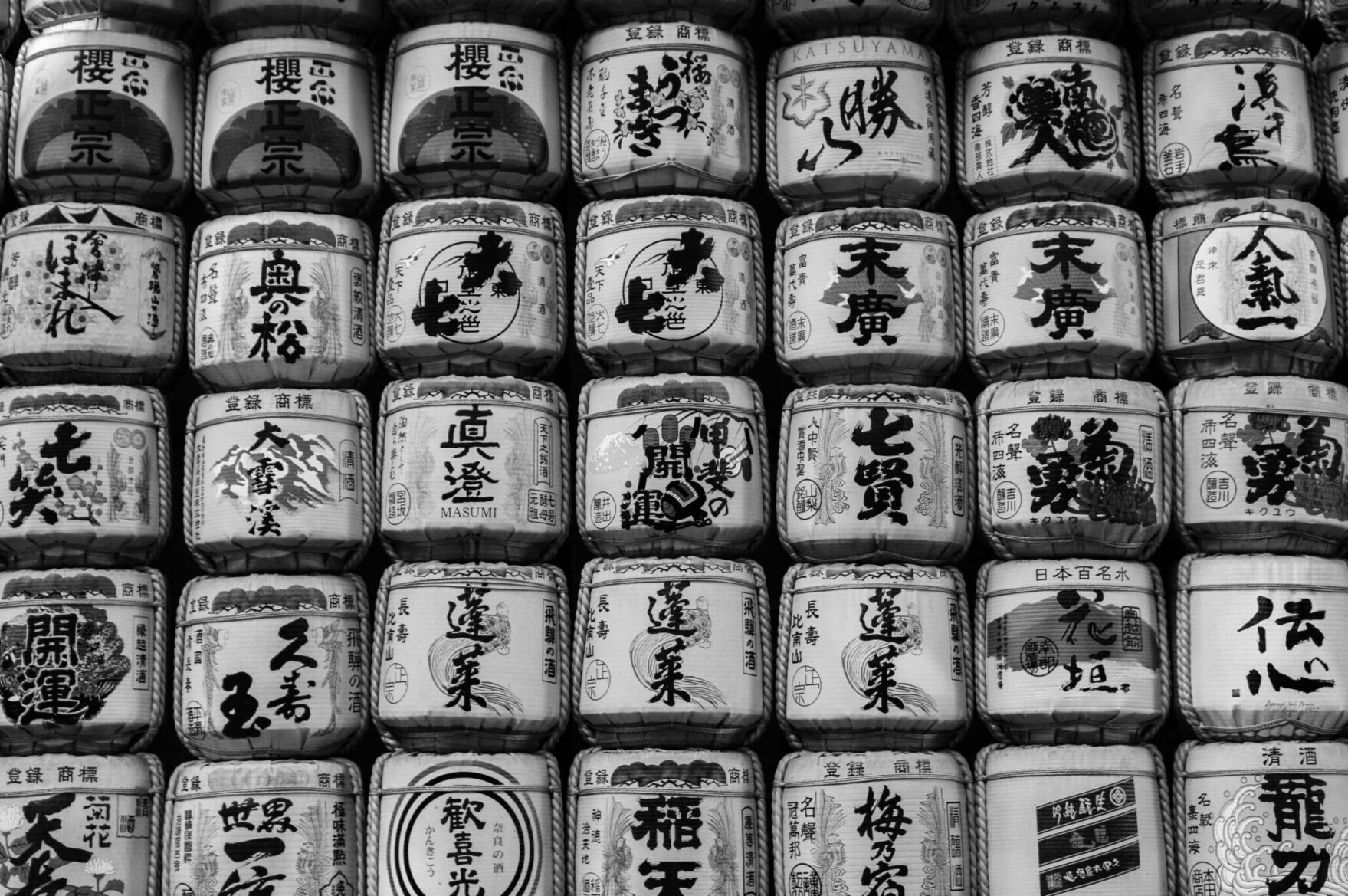
Tsuki no Katsura (月の桂): The Artisan Pioneer
Founded in 1675 in Fushimi, Kyoto, Tsuki no Katsura is one of Japan’s oldest family-run breweries, operated by the Masuda Tokubee family for over 14 generations. The brewery is celebrated for reviving nigori sake in the 1960s, sparking a national resurgence of the cloudy, unfiltered style. Known for its small-batch craftsmanship and elegant flavor balance, Tsuki no Katsura remains a favorite among chefs and sake connoisseurs worldwide.
Founded: 1675 | Location: Fushimi, Kyoto
- One of the oldest family-run breweries in Japan (over 14 generations).
- Famous for reviving nigori sake (cloudy, unfiltered style) in the 1960s, which sparked a national trend.
- Produces small-batch, premium-level sake with deep respect for tradition and terroir.
- Known for Tsuki no Katsura Junmai Daiginjo and Tsuki no Katsura Nigori, both celebrated for balance and elegance.
- Often featured in Michelin-star restaurants for its pairing versatility.
Their flagship nigori sake was the first of its kind marketed post-WWII, a true Kyoto innovation story.
Visit their official website HERE!
5 of the Best Sake Bars in Kyoto (2025 Edition)
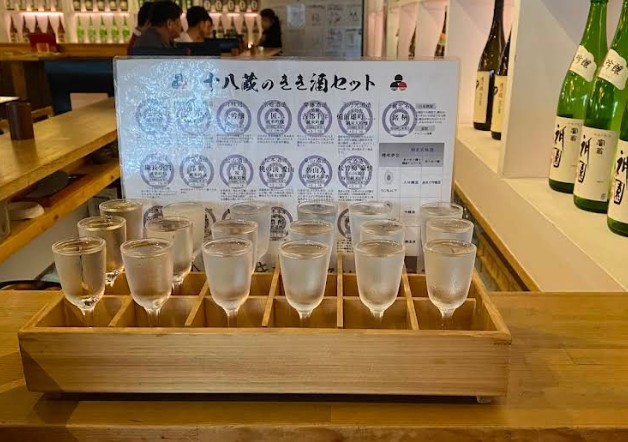
Fushimi Sake Village
Fushimi Sake Village is the ultimate starting point for anyone exploring Kyoto’s sake scene. Located in the heart of Fushimi, the city’s historic brewing district, it brings together 18 local breweries under one roof, offering an incredible range of flavors and styles in one lively space. Visitors can sample everything from crisp, aromatic ginjo sake to bold, umami-rich junmai, making it an ideal stop for both first-timers and seasoned enthusiasts.
The atmosphere is casual yet vibrant, with standing counters, small eateries, and friendly staff eager to guide you through Kyoto’s sake heritage. Don’t miss pours from local favorites like Tamanohikari and Kizakura, both representing the balance of tradition and innovation that defines Fushimi sake. On weekends, try to grab a seat at the outdoor counter, perfect for people-watching while sipping a chilled glass of Kyoto’s finest.
- Top local labels: Don’t miss iconic pours like Tamanohikari and Kizakura, representing the blend of tradition and modern craftsmanship in Fushimi sake.
- Perfect for all levels: Whether you’re a first-time taster or a seasoned sake fan, it’s a relaxed, approachable way to experience Kyoto’s sake culture.
- Pro travel tip: Pair your visit with a stroll to nearby Gekkeikan Okura Sake Museum, where you can learn how Kyoto’s pure Fushimi water shapes its world-famous sake.
- Non-smoking
Want to visit the Fushimi Sake Village? Check out the location HERE.
Visit their Official Website here to make reservations (walk-ins are possible, but weekends can be crowded). Please use a computer translator to navigate the website, as there is no English language support.
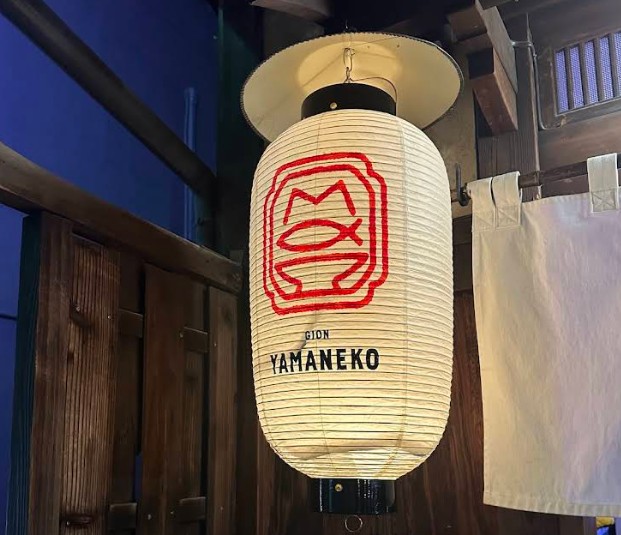
Yamaneko Gion Craft Beer & Sake Bar Izakaya
Located in the heart of Gion, Yamaneko Gion is a stylish yet approachable bar where visitors can enjoy Kyoto’s best sake inside a beautifully renovated 150-year-old machiya (traditional teahouse). The bar specializes in Kyoto-made sake, offering more than 50 varieties from local breweries such as Gekkeikan, Tamanohikari, and Tsuki no Katsura. Guests can order tasting flights or explore regional differences through seasonal brews, all served in a relaxed izakaya-style setting. The friendly staff provide English menus and sake explanations, making it an ideal stop for foreign visitors curious about Japan’s brewing traditions.
Yamaneko Gion also offers a refreshing twist by serving local craft beer, plum wine, and Kyoto gin, perfect for travelers with mixed drink preferences. Small plates and grilled dishes complement the drinks, including crispy gyoza, aburi-style snacks, and dried seafood prepared over a charcoal grill. With its blend of historic charm, local authenticity, and modern hospitality, this non-smoking bar offers one of the most comfortable ways to experience Kyoto’s sake culture. Whether you’re a sake enthusiast or a first-timer, Yamaneko Gion delivers a warm, memorable introduction to Kyoto’s brewing heritage.
- English-friendly: Bilingual menus and staff make it easy for travelers to explore sake confidently.
- Historic Gion setting: Located inside a renovated 150-year-old teahouse, combining tradition with a relaxed izakaya feel.
- Beyond sake: Offers craft beer, Kyoto gin, and umeshu (plum wine) for variety within a group.
- Food pairings: Enjoy grilled snacks, dried fish, and small izakaya plates designed to match sake’s umami flavors.
- Non-smoking
Visit the Yamaneko Izakaya HERE.
You can also reserve a table through Google Maps!
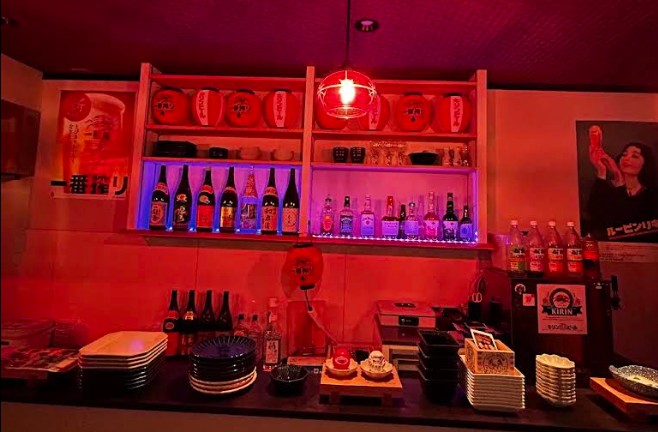
Bar Pontostand
Tucked away in Pontocho, Bar Pontostand is a cozy, bilingual-friendly bar that perfectly blends Kyoto’s traditional charm with a relaxed, modern vibe. Run by two welcoming hosts, Mako and Taku, this intimate spot is known for its warm hospitality and English-speaking staff, making it one of the most approachable bars in Kyoto for foreign visitors.
The bar features a rotating selection of local sake from Kyoto and beyond, along with playful options like fruit-infused sakes and umeshu (plum wine). It’s the kind of place where conversation flows easily between guests, locals, and the owners over a shared love of Japanese drinks.
Beyond the sake, Pontostand also serves up crispy gyoza and light bar snacks, perfect for pairing with your tasting flight. With room for fewer than 20 people, it offers a friendly, communal atmosphere that’s ideal for solo travelers or small groups exploring Kyoto’s nightlife around Sanjo and Kiyamachi. If you’re new to sake or simply want to enjoy a casual night out with Kyoto flavor, Pontostand is a must-try stop.
-
Foreigner-friendly sake bar: English-speaking owners offer easygoing introductions to Japanese sake and are happy to recommend flights or pairings.
-
Approachable sake options: Try Kyoto-brewed labels, fruit-infused sake, and plum wine, which is perfect for beginners.
-
Tasty local bites: Famous for gyoza and light izakaya dishes, complementing each sake pour.
-
Traveler tip: Visit early or midweek to snag a seat — and ask for a tasting flight that mixes Kyoto and regional sakes.
-
Non-smoking
Want to visit? Check out their location HERE!
As they are a smaller bar, it doesn’t seem like they accept reservations. Make sure to get there a little early to secure a spot!
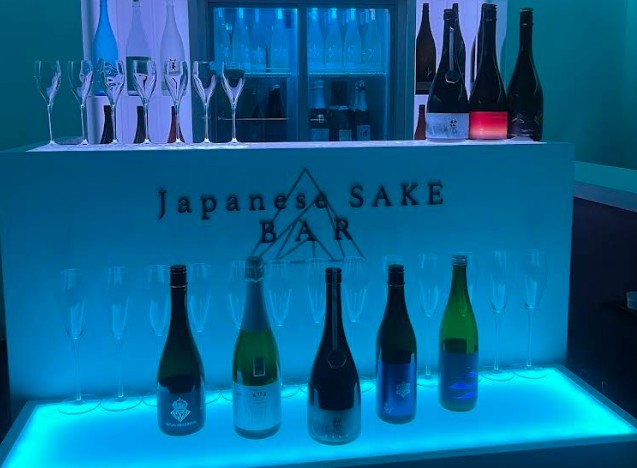
Japanese SAKE BAR/日本酒バー 祇園本店
Tucked away in Kyoto’s elegant Gion district, Japanese SAKE BAR Gion Honten offers an intimate, refined atmosphere that showcases the artistry of premium sake.
The bar features an impressive selection from across Japan, with a special focus on Kyoto’s own breweries such as Gekkeikan, Tamanohikari, and Tsuki no Katsura. Each pour is served in beautiful glassware or handcrafted ochoko cups, allowing guests to fully appreciate the aroma and flavor nuances of each sake.
The staff here are knowledgeable and passionate, often recommending pairings or guiding visitors through tasting flights that highlight different rice polishing levels and regional styles.
The setting blends modern sophistication with traditional Gion charm, making it a perfect stop after an evening stroll through Hanamikoji Street or a nearby kaiseki dinner. For a truly local experience, ask the bartender for a seasonal limited-edition sake available only in Kyoto.
-
Stylish yet traditional: The bar combines modern design with Gion’s old-world charm, creating a relaxed yet sophisticated experience.
-
Perfect Gion stop: Ideal for an evening drink after exploring Hanamikoji Street or enjoying a kaiseki dinner nearby.
-
Local insider tip: Ask for the seasonal limited-edition sakes, available only in Kyoto, for an authentic local touch.
-
Non-smoking
Visit this sake bar HERE.
If you would like to reserve a seat (not necessary, especially on weekdays), then please call their number listed on Google Maps.
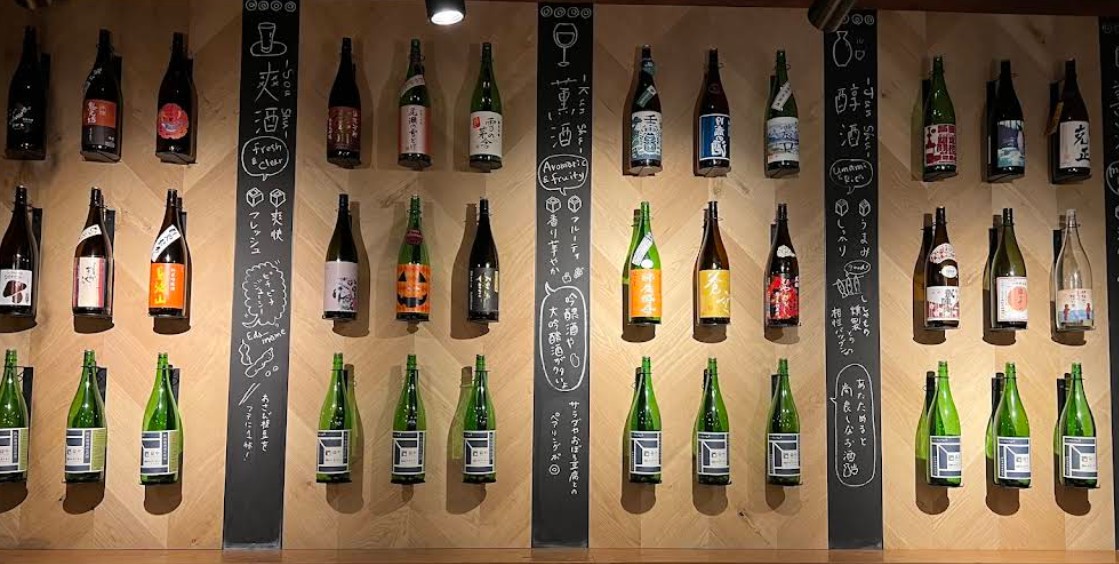
Sake Hall Masuya (益や酒店)
Located near Shijo Karasuma in central Kyoto, Sake Hall Masuya is a cozy, stylish bar that celebrates the best of Japan’s sake culture. With over 100 varieties from across the country, it’s a perfect place to explore regional flavors while enjoying the lively downtown atmosphere.
The menu features local favorites such as Kizakura, Tamanohikari, and Gekkeikan, along with rare bottles from smaller craft breweries. Friendly staff are happy to recommend tasting flights that highlight different brewing styles, rice types, and flavor profiles.
The food at Masuya is delicious and pairs beautifully with the sake. From Kyoto-style obanzai and fresh sashimi to rich, seasonal small plates, every dish enhances the tasting experience. The warm wood interior and inviting counter seating make it easy to relax and stay awhile.
Just steps from the city’s shopping and nightlife district, Masuya offers an authentic and flavorful taste of Kyoto’s modern sake scene.
- Expertly curated sake flights showcasing different brewing styles, rice types, and flavor profiles from across Japan.
- Delicious Kyoto-style dishes like obanzai and sashimi that pair perfectly with each pour.
- Central location near Shijo Karasuma, great for starting or ending a night out in downtown Kyoto.
- Non-smoking
Visit Sake Hall Masuya HERE.
Want to reserve? Visit their Official Website HERE and scroll down for their phone number. We recommend reserving if you are going there on a weekend!
Where to Buy Sake in Kyoto
If you’ve fallen in love with Kyoto’s sake scene and want to bring a bottle home, you’re in luck. The city offers some of Japan’s best sake shops, ranging from centuries-old breweries to well-stocked chains like Liquor Mountain, where locals buy their favorite bottles.
Here are some of our favorite places to buy sake in Kyoto:
Liquor Mountain
A Kyoto-born liquor chain with several convenient locations across the city. Liquor Mountain carries a huge range of local Kyoto sakes, from Fushimi classics to rare seasonal releases. Prices are often lower than at department stores, and staff are knowledgeable about sake styles and food pairings.
There are many Liquor mountains around, but if you are near the Nishiki Market, we recommend visiting THIS store.
Kyoto Takashimaya
The department store’s basement food hall (depachika) features a curated sake section with brands from across Japan. Staff can help match bottles to your flavor preferences, such as dry, sweet, or full-bodied.
Visit Takashimaya in Kyoto HERE!
Fushimi Yume Hyakushu
A specialty shop offering over 100 varieties from Fushimi’s breweries. You can sample before buying, and they often stock seasonal releases unavailable elsewhere.
Visit Fushimi Yume Hyakushu HERE!
Daimaru Kyoto
Convenient for travelers in the downtown district of Kyoto, this department store carries premium Kyoto sakes, including gift sets perfect for souvenirs. Travel to the basement floor and wander around, you’ll find tons of delicious food vendors and alcohol vendors down there!
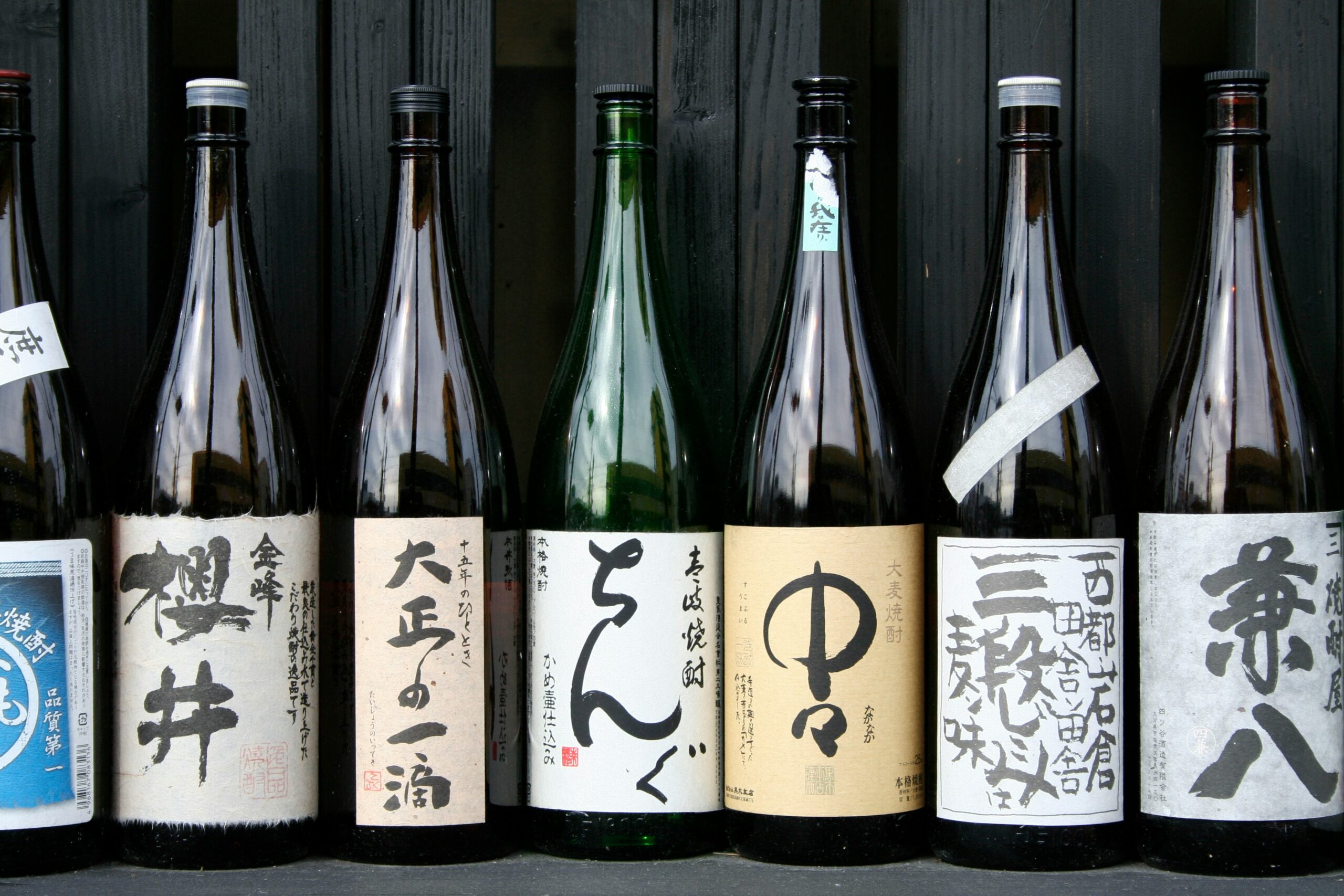
Kyoto Sake Tasting Tips
When ordering sake in Kyoto, politeness and curiosity go a long way. A friendly “Osusume wa arimasu ka?” (Do you have any recommendations?) invites the bartender to suggest local favorites, and lifting your cup slightly when someone pours shows good manners. Most Kyoto bars are welcoming to beginners, so don’t hesitate to ask questions or request a tasting flight to explore different styles.
You’ll sometimes choose between hot and chilled sake. Premium types such as ginjo and daiginjo are best served chilled to highlight their aroma and delicate flavors, while junmai or honjozo are often warmed to bring out a deeper umami taste.
Kyoto’s delicate cuisine pairs beautifully with the subtle flavors of local Kyoto sake. Dishes like yuba (tofu skin) and tofu highlight the smooth, refreshing profile of junmai ginjo, while a slightly warmed junmai complements heartier foods such as miso soup or simmered vegetables. For elegant kaiseki dining, a chilled daiginjo enhances sashimi and seasonal vegetables, and a soft nigori provides a gentle finish with dessert.
The key is to match the sake’s texture and aroma with the balance of the dish, creating a harmony that reflects Kyoto’s refined culinary tradition.
Want to know more about the art of tasting sake? Visit this blog, “A Beginner’s Guide to Tasting Sake” to learn more.
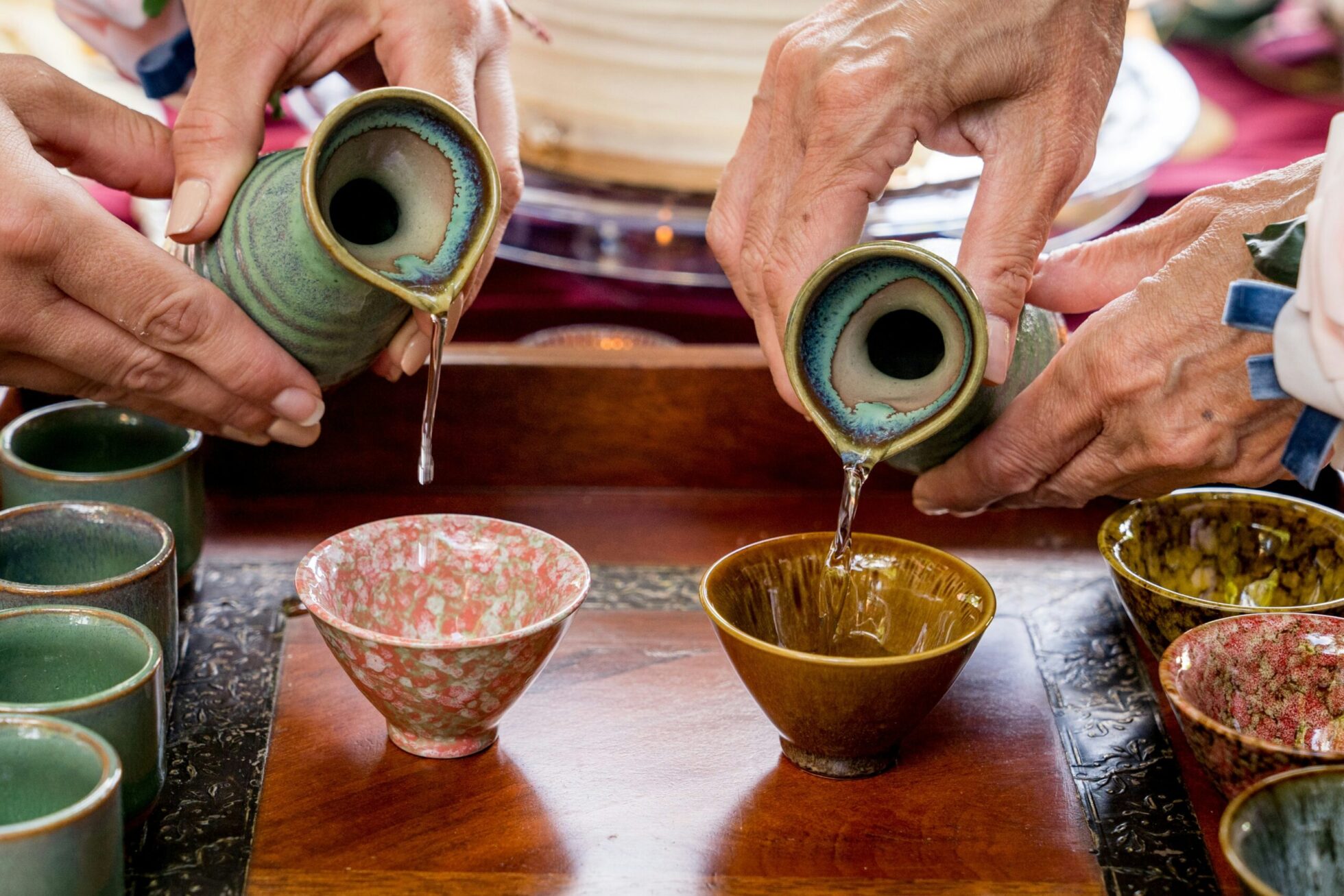
Sake Etiquette in Japan
In Japan, pouring and receiving sake is an expression of respect and connection. When pouring for someone else, hold the bottle with both hands, and if you are the one being served, lift your cup slightly to show appreciation.
It’s polite to let others pour for you rather than filling your own glass, especially in social or formal settings. This simple exchange reflects Japanese hospitality, where the act of serving and being served is as meaningful as the drink itself. However, as a tourist, please do not feel like you have to worry about these subtle mannerisms!
Drinking with Locals What’s Polite and What’s Not
When drinking with locals, observe how they set the pace and follow their lead. Wait until everyone has been served before taking your first sip, and never pour only for yourself. It’s polite to keep an eye on others’ glasses and offer refills when they run low, which helps build friendly rapport.
Avoid getting overly loud or drinking too quickly, as moderation and good manners are valued more than quantity. Showing genuine interest in the sake or food is always appreciated and often sparks great conversation.
And finally, DO NOT TAKE SAKE AS A SHOT! Sake is meant to be sipped and enjoyed with your meal!
Understanding “Kampai” Culture
Before drinking, everyone raises their glass and says “Kampai!”, which means “cheers.” It’s a shared moment of goodwill that marks the start of a meal or celebration. Be sure to wait for the “kampai” before taking your first sip, as drinking early is considered rude.
The “kampai” tradition embodies Japan’s sense of togetherness, turning each toast into a warm social connection rather than just a formality.
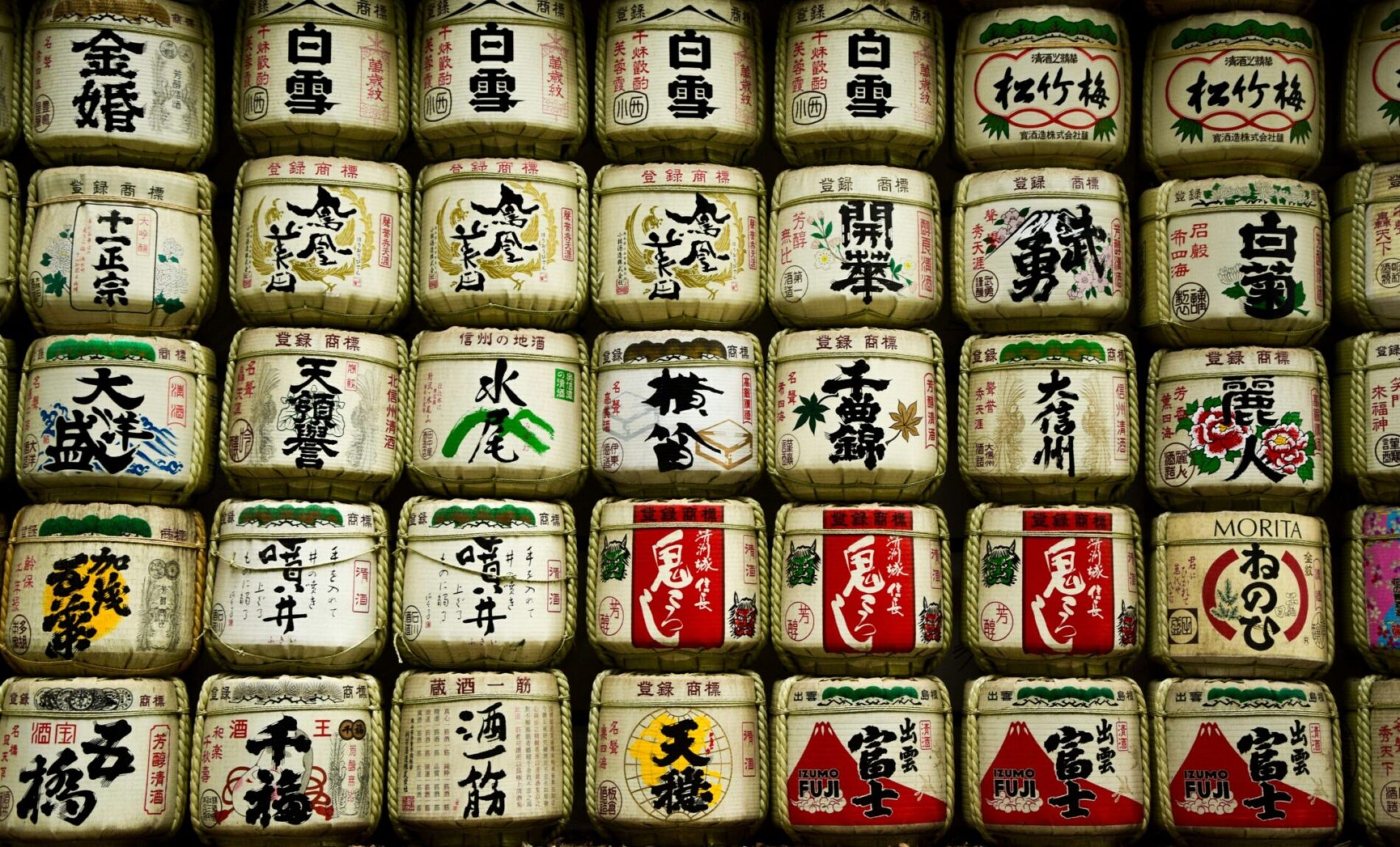
Sip Slowly, Discover Deeply
Kyoto is the rare city where tradition, craft, and nightlife meet in perfect balance. From the soft, elegant character of Fushimi sake to the welcoming counters of neighborhood Japanese izakaya, this Kyoto sake guide showed how to explore the city sip by sip.
Whether you start with tasting flights at Fushimi Sake Village, seek a refined pour in Gion, or drop into a cozy bar near Sanjo, you will find styles that suit every palate, from junmai to daiginjo and seasonal nama. Pair those pours with yuba, tofu, or a kaiseki course, and you will understand why sake belongs at the heart of Kyoto dining.
As you plan your nights out, use this list of the best sake bars in Kyoto to map an easy route through Kyoto nightlife, then lean on the tips and etiquette section to order with confidence. Ask staff for their recommendations, try a flight to compare flavors, and follow local customs with a cheerful kampai.
Interested in learning about incredible sightseeing locations across Kyoto? Make sure to check out our other blog posts, such as our guide to the Nishiki Market, the history of Fushimi Inari, and an itinerary for 3 full days in Kyoto.
We also run food tours in Kyoto, Tokyo, and Osaka, so be sure to put those on your itinerary when you come to Japan!
Speaking of itinerary, we at Ninja Food Tours provide itinerary reviews exclusively for our food tour guests. We also share personalized recommendations tailored to your trip! So be sure to check out our food tours in Kyoto!
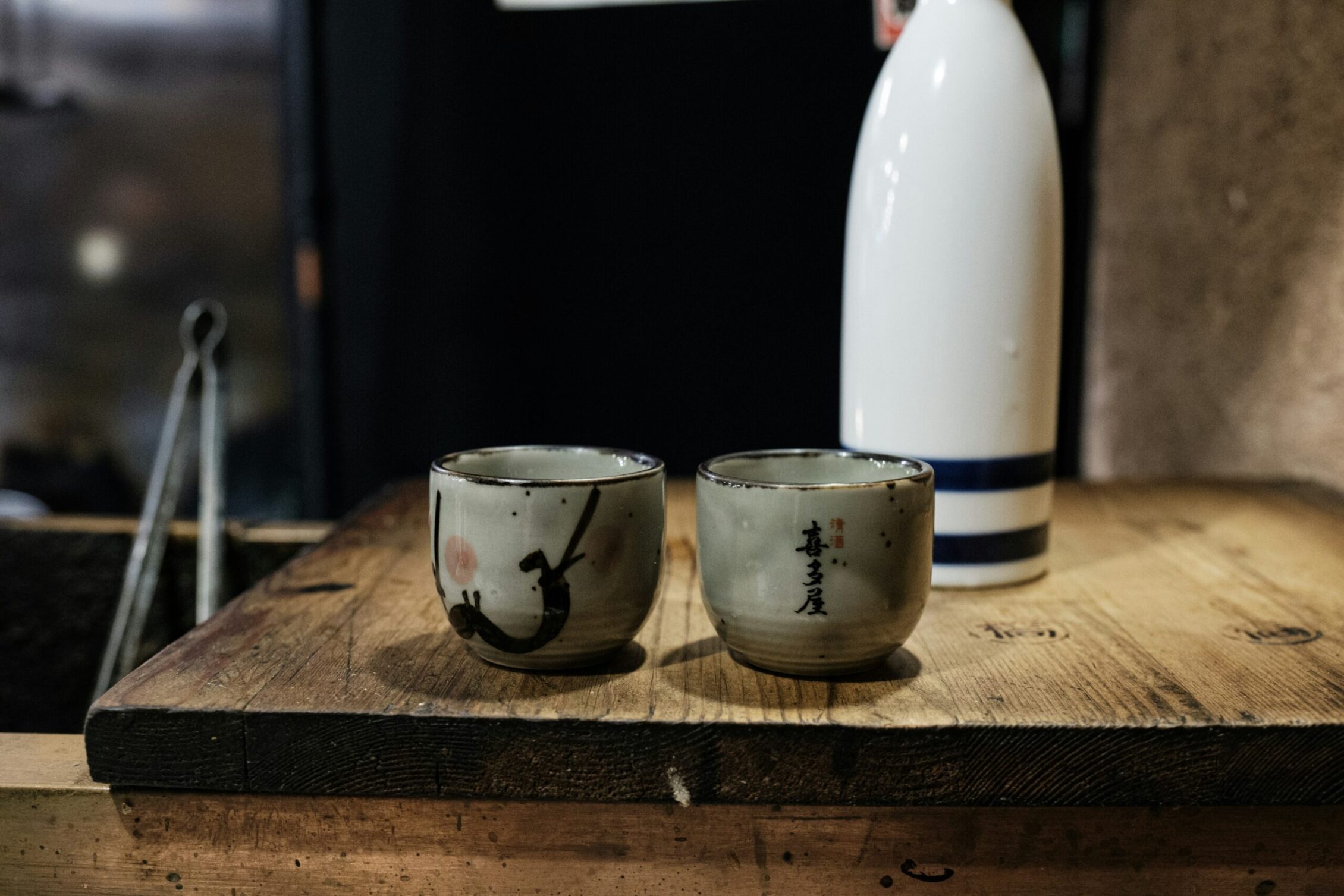
FAQs: Sake Bars in Kyoto
Q: Can I find English menus in Kyoto sake bars?
A: Sometimes. Many sake bars that cater to travelers, such as Fushimi Sake Village, and Sake Hall Masuya, provide English menus or have staff who can explain the selections in English. If an English menu is not provided, you can use your phone to translate!
Q: What is the legal drinking age in Japan?
A: The legal drinking age is 20 years old. Bars and restaurants will ask for ID if you appear underage.
Q: Can I bring sake bottles home from Kyoto?
A: Yes, you can purchase sealed bottles from most breweries and shops. For international flights, pack them securely in checked luggage and check your destination’s alcohol import rules. Make sure the sake is pasteurized as well!
Q: Do I need a reservation for Kyoto’s sake bars?
A: Reservations are not always required, but popular spots in Gion or downtown Kyoto can fill up quickly, especially on weekends. Making a reservation is recommended for smaller, high-end bars.
Q: How much does sake typically cost at a bar in Kyoto?
A: Prices vary depending on the type and rarity of the sake. Expect to pay around ¥500–¥800 per glass at casual bars, and ¥1,000–¥2,000 for premium or limited-edition pours.
Q: Are there non-alcoholic options at sake bars?
A: Some bars offer amazake (a sweet, low- or non-alcoholic rice drink) or soft drinks for guests who do not drink alcohol. There are also some soft drinks, like oolong tea or ginger ale, available.
Q: What is the best time to visit sake bars in Kyoto?
A: Most bars open in the late afternoon or early evening. Visiting around 5–8 p.m. lets you enjoy tastings before dinner or as part of a relaxed night out.
Q: Can I taste before ordering a full glass?
A: Some sake bars, such as Fushimi Sake Village, offer tasting flights or small pours that let you sample different styles before choosing your favorite.
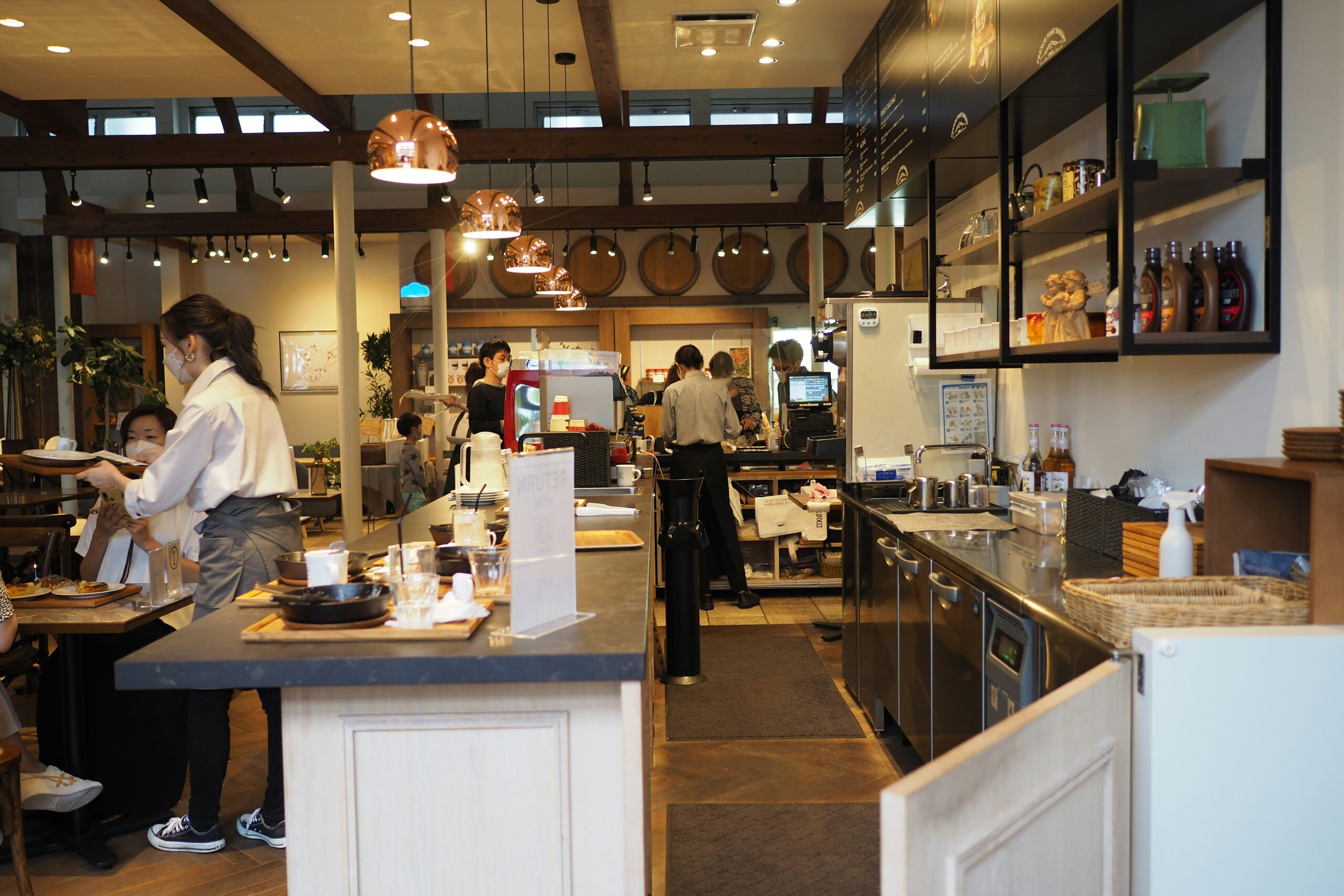
Where to Get the Best Coffee in Kyoto: Local Favorites and Hidden Gems
Kyoto may be famous for its temples, tea ceremonies, and timeless streets, but locals know this city runs just as much on coffee as it does on matcha. Tucked between quiet lanes and bustling markets, you’ll find an ever-growing scene of cafés that blend Japanese craftsmanship with global coffee culture. From minimalist roasters pouring single-origin […]
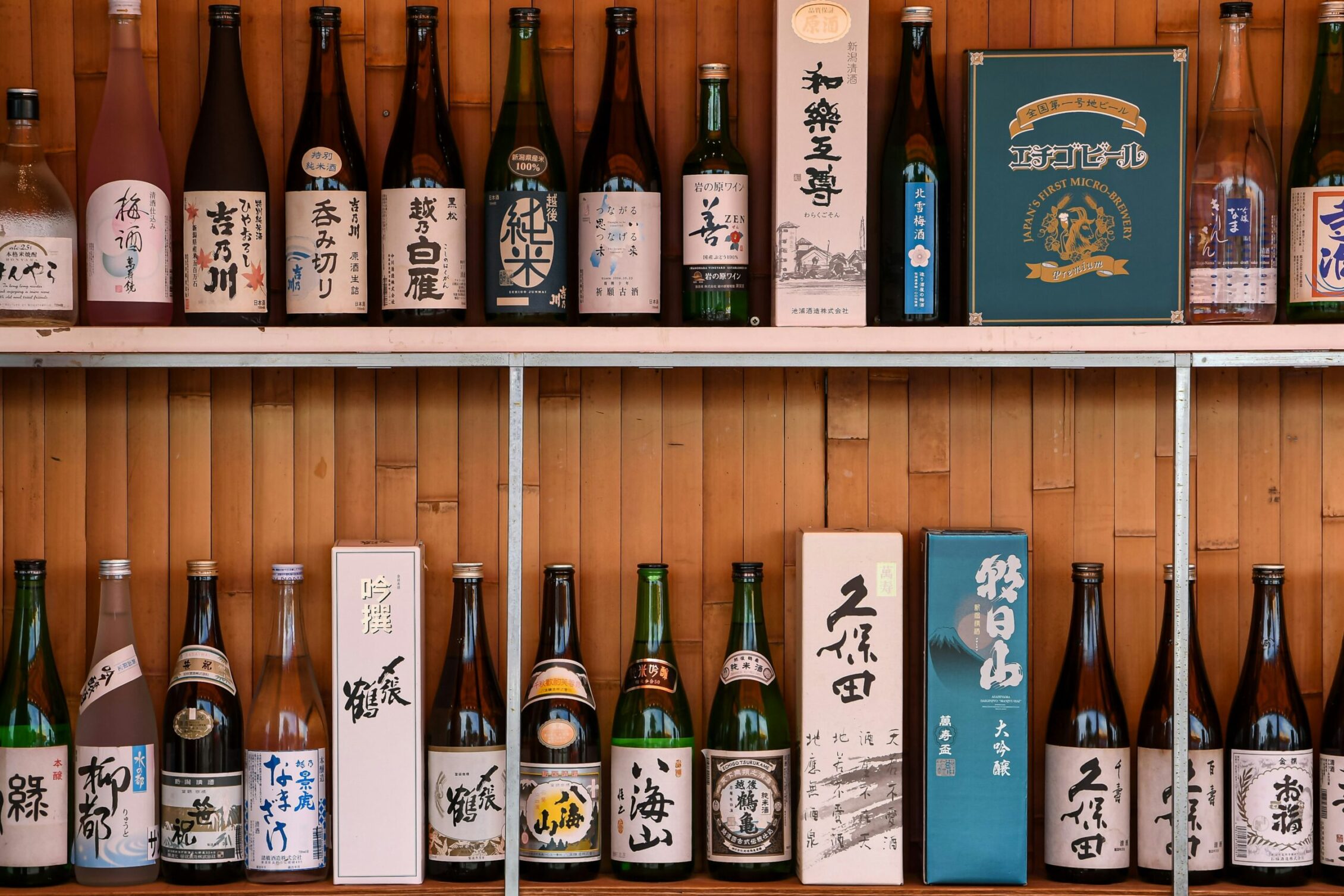
Best Sake Bars in Kyoto: Local Favorites and Tasting Tips
Kyoto: The Heart of Japan’s Sake Culture By day, Kyoto hums with quiet grace. Temple bells echo through bamboo groves, monks stride through moss gardens, and the scent of incense drifts in the air. But when night falls, the city’s calm spirit transforms. Lanterns flicker to life in narrow alleys, laughter spills from cozy izakayas, […]
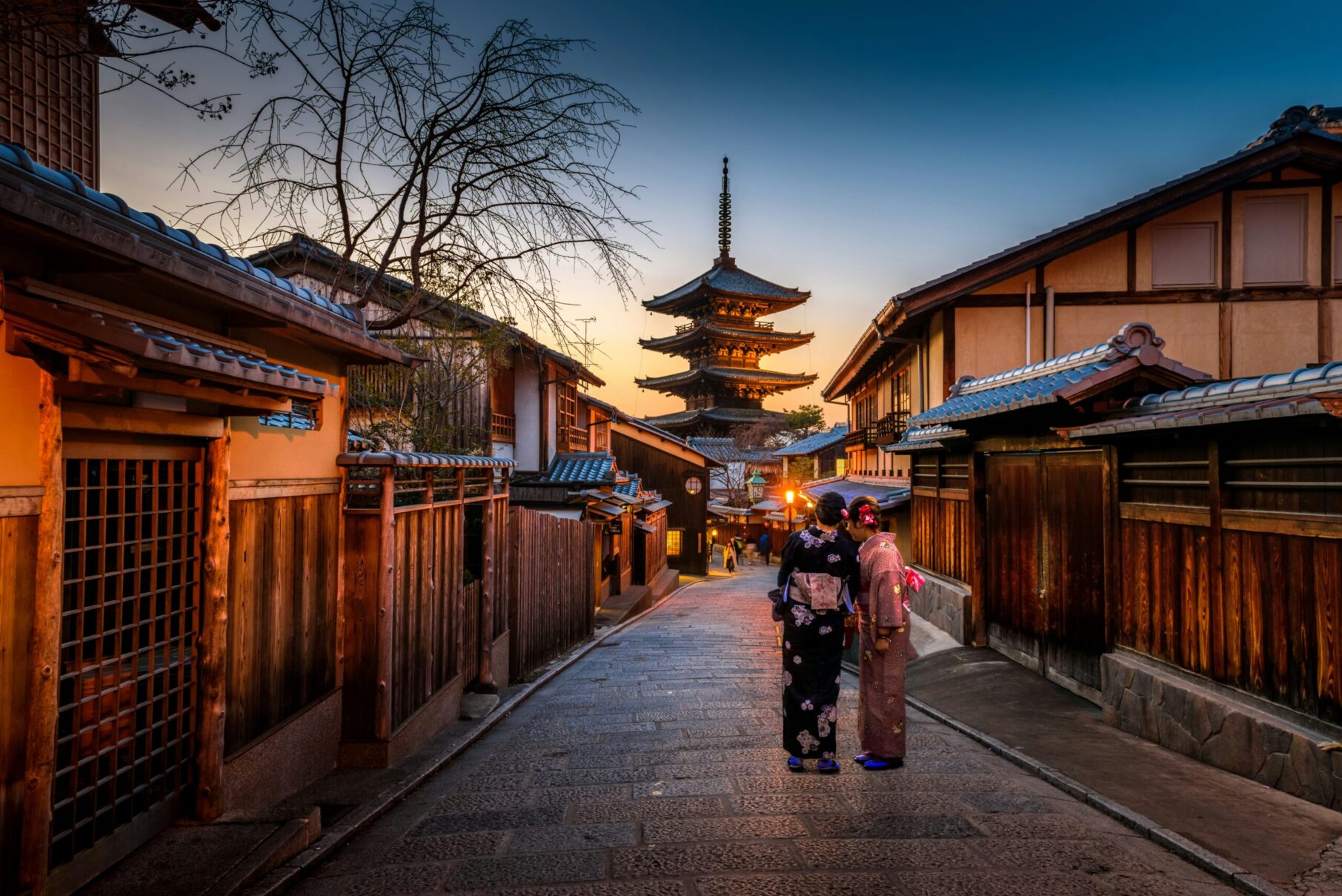
Kyoto Kaiseki on a Budget: 5 Authentic Restaurants You Can Actually Afford
Kyoto is one of the world’s great places to experience kaiseki cuisine. But what exactly is kaiseki? It is a multi-course haute cuisine rooted in respect for seasonality, ingredients, presentation, and ritual. Kaiseki is more than just food. It’s an experience: the sequence of courses, the setting (tatami room, garden view, etc.), the aesthetic of […]
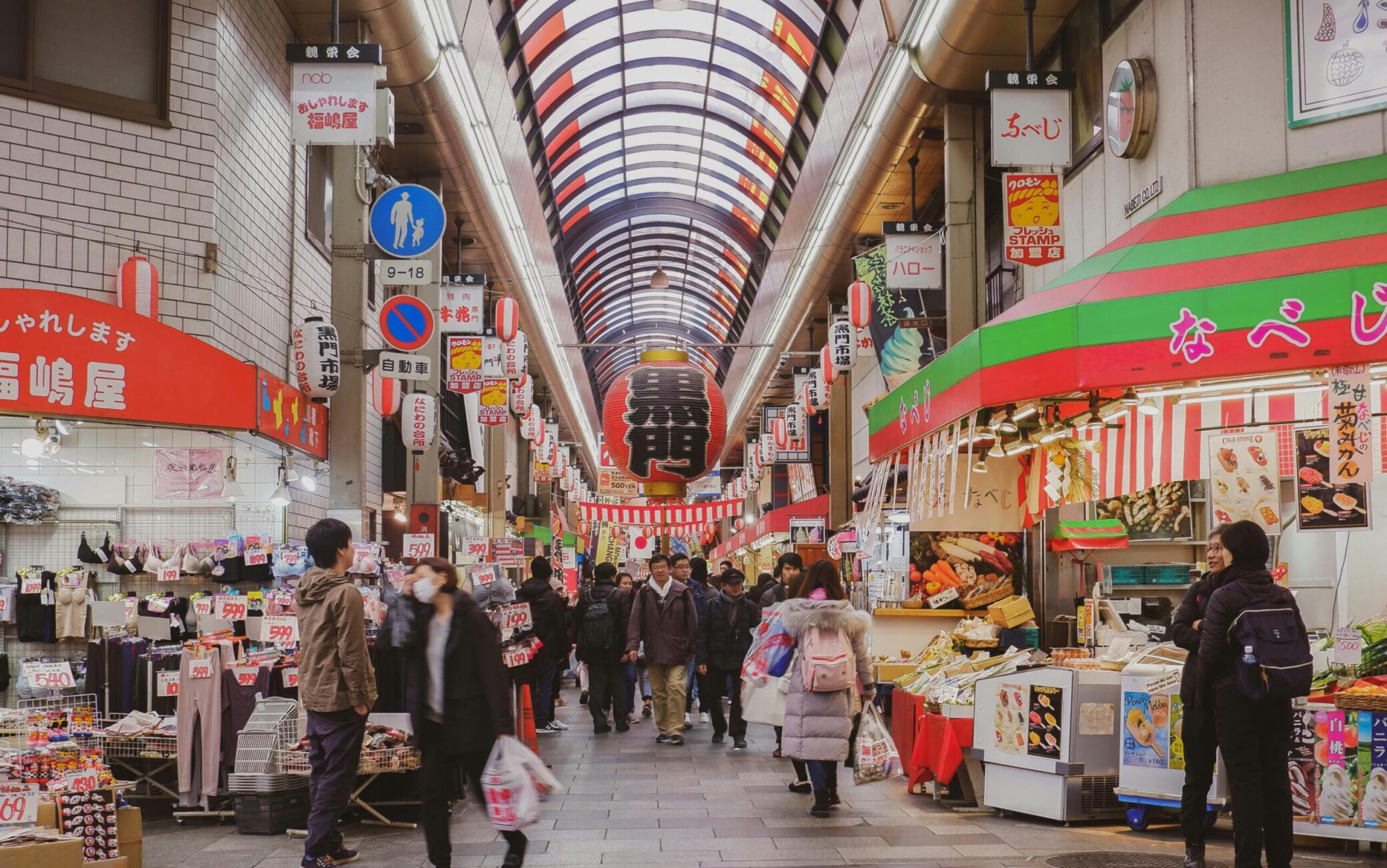
Best Osaka Fish Markets: A Guide to Fresh Seafood, Fugu, Tuna, and More
Osaka is famously called “Japan’s Kitchen” for a reason. The city has long been a hub for trade, food innovation, and of course, seafood. From lively markets where locals shop daily to wholesale centers supplying Japan’s top restaurants, Osaka’s fish markets are an essential part of the city’s culinary identity. In this guide, we’ll explore […]

